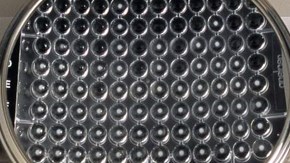The objective is usually to guide the clinical veterinarian in the choice of treatment of a bacterial infection. This is important to avoid unnecessary and incorrect use of antibiotics. The tests can also be done in order to monitor if a bacterial population is changing, for example, by new resistance genes picked up by the bacterium. This is important for the earliest possible detection of new resistant clones that are being disseminated.
To determine the susceptibility of a bacterium to different antimicrobials, either dilution tests (generally microdilution) or agar diffusion tests (generally disk-diffusion) are used. For both methods, it is imperative that established methodological standards are followed and that the quality assurance is rigorous. For MIC ranges for control strains see EUCAST quality control tables (pdf).
SVA is the Swedish national reference laboratory for antimicrobial susceptibility tests of bacteria of animal origin.
